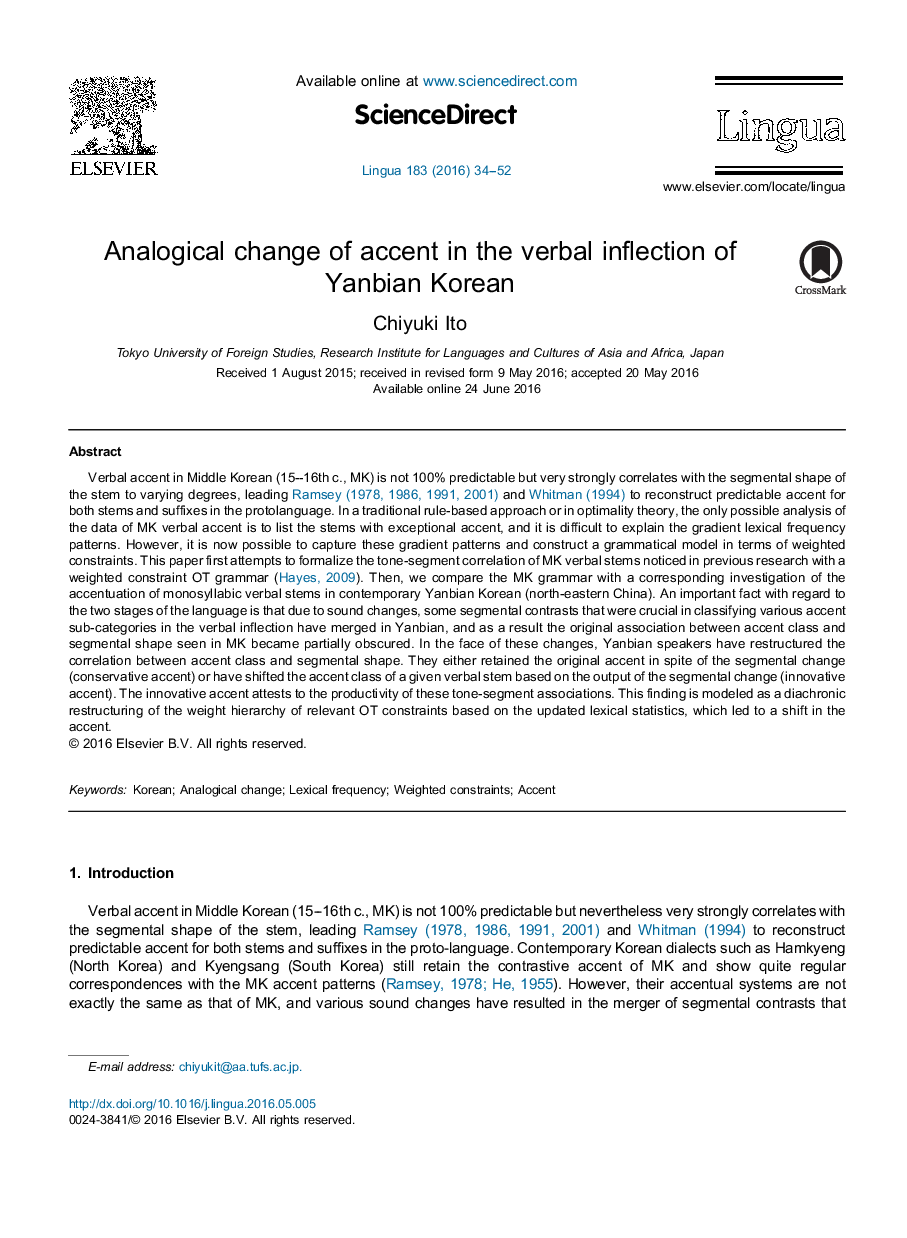| کد مقاله | کد نشریه | سال انتشار | مقاله انگلیسی | نسخه تمام متن |
|---|---|---|---|---|
| 5043071 | 1475032 | 2016 | 19 صفحه PDF | دانلود رایگان |
- Middle Korean and Yanbian have statistically significant segment-tone correlations.
- Sound changes obscured the segment-tone correlations observed in Middle Korean.
- Yanbian has shifted the accent based on the output of the segmental changes.
- These changes are explained by a restructuring of the constraint weight hierarchy.
Verbal accent in Middle Korean (15-16th c., MK) is not 100% predictable but very strongly correlates with the segmental shape of the stem to varying degrees, leading Ramsey (1978, 1986, 1991, 2001) and Whitman (1994) to reconstruct predictable accent for both stems and suffixes in the protolanguage. In a traditional rule-based approach or in optimality theory, the only possible analysis of the data of MK verbal accent is to list the stems with exceptional accent, and it is difficult to explain the gradient lexical frequency patterns. However, it is now possible to capture these gradient patterns and construct a grammatical model in terms of weighted constraints. This paper first attempts to formalize the tone-segment correlation of MK verbal stems noticed in previous research with a weighted constraint OT grammar (Hayes, 2009). Then, we compare the MK grammar with a corresponding investigation of the accentuation of monosyllabic verbal stems in contemporary Yanbian Korean (north-eastern China). An important fact with regard to the two stages of the language is that due to sound changes, some segmental contrasts that were crucial in classifying various accent sub-categories in the verbal inflection have merged in Yanbian, and as a result the original association between accent class and segmental shape seen in MK became partially obscured. In the face of these changes, Yanbian speakers have restructured the correlation between accent class and segmental shape. They either retained the original accent in spite of the segmental change (conservative accent) or have shifted the accent class of a given verbal stem based on the output of the segmental change (innovative accent). The innovative accent attests to the productivity of these tone-segment associations. This finding is modeled as a diachronic restructuring of the weight hierarchy of relevant OT constraints based on the updated lexical statistics, which led to a shift in the accent.
Journal: Lingua - Volume 183, November 2016, Pages 34-52
